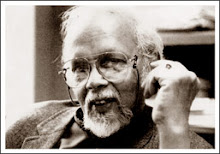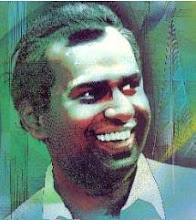Date:15/09/2010
Source: Daily News
Kapila Palihawadana on nATANDA Dance Theatre’s newest production:
Waken the raven
Known as a contrary spirit the Raven had always been a bird which had been linked with superstition and magic for centuries.| |
On the negative side the bird represents evil spirits, the devil, the thief, trickster, destruction, war, death and doom. Yet in a few other cultures the Raven stands for transformation, healing power, wisdom, protection and prophecy.
This large bodied member of the Corvus family is related to its miniature version of crow, jackdaw and rook.
Dubbed the symbol of the sun as well as a metaphor for a moonless night, the Raven is the birth giving light at the center of the galaxy as well as the black hole in the universe from which we travel to our eventual extinction. The complex attitude towards the bird had fascinated many literary thespians.
| |
Writers from the Roman poet Publius Ovidius Naso to British playwright William Shakespeare have used this striking all black bird to create imagery in their work. American writer Edgar Allan Poe had even penned an entire poem called The Raven.
nATANDA Dance Theatre founder and artistic director Kapila Palihawadana too was attracted by the species. He explained that he came upon the concept in Batticaloa where he was on a visit to conduct a workshop.
“The roads were deserted at dusk. I was sitting in the veranda by a mango tree. A crow was perched on one of the branches which were just within my sight. He looked right into my eyes and I was quite taken aback because it was a questioning look. It intrigued me.
As I was returning home on the train the next day I was struck by the idea of doing my next project based on the bird,” Kapila elaborated on how the exceptional dance performance took shape.
Just as a painter can create visual images through his brush and a poet can string couplets through his pen a dancer is a person who can dream with his feet.
After spending three months of research by observing as well as reading up about the subject the nATANDA team finally pieced together their knowledge to produce Ravens, a dance production re-examins the public perception of the crow. Divided into 11 parts the performance follows a group of ravens struggling to coexist.
Watch the dancers give birth to crows and wrestle to overcome the trials of the outside world amidst all its disorder and pollution.
Ravens reflect these features but does not simply imitate. The dancer’s style of presentation had added substance to the production which is blended with modern techniques of composition.
| |
| |
Speaking about the fact that nATANDA does not believe in confining a dancer to a pre-choreographed mould, Kapila said that most of the modern dancers does not know the value of the art.
He says: “This is because the interaction between the teacher and student is minimized. You need to give freedom to the students to try out new concepts. Sometimes the student has the power to excell over the teacher.
This should be accepted and understood. I always challenge my students because I do not hand the whole package over on a silver platter.
As an artiste you should know how to bring your knowledge and contribution to the choreography instead of copying the teacher’s moves. You need to think ahead. A teacher is there only to judge if the student’s ideas are suitable for the theme, body capability and if it is suitable for the dance item.”
Running for one hour and 15 minutes the Ravens will be staged at the British Council on September 29 at 7.30 p.m.
Queried about the social stigma towards the bird, Kapila says that there are indeed a lot of myths surrounding the crow’s existence. “German Professor Bernd Heinrich had dug deep into facts about the raven’s life. These stories struck a cord in my heart because we never imagined that the raven is such a caring creature.
They have a lot of communication skills and they have a network in which there is a leader as well as team spirit. They are similar to us in a lot of ways,” he noted adding that the challenge was to link the bird’s similarities with those of the human.
One of the reasons for the raven’s existence is to keep the environment clean.
Frangipani, Betodiaf, Issuki, Modaborn and Mokabalo are some of nATANDA’s past productions. They are also involved with charity work of bring emerging young dancers to the stage. Their next project involves the hearing impaired from Ratmalana. It is based on the sign language.
Pictures by Lekha Edirisinghe








































No comments:
Post a Comment